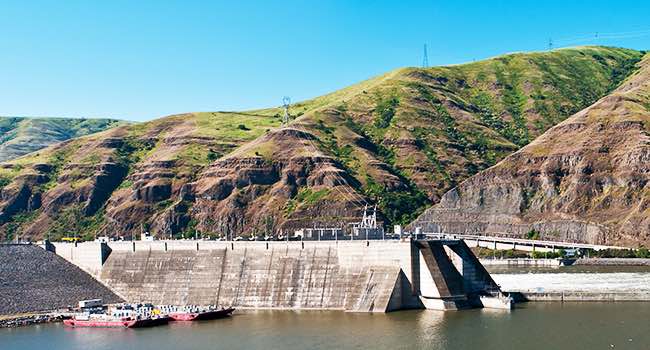forum
library
tutorial
contact

BPA Adopts New Streamflow Forecast
to Reflect Changing Climate
by Paul Ciampoli
American Public Power, September 3, 2022
|
the film forum library tutorial contact |

|
BPA Adopts New Streamflow Forecast
by Paul Ciampoli
|
 Regional shifts in streamflows have prompted the Bonneville Power Administration (BPA) to revise its generation forecast methodology to more accurately reflect a Northwest water supply impacted by climate change, BPA recently reported.
Regional shifts in streamflows have prompted the Bonneville Power Administration (BPA) to revise its generation forecast methodology to more accurately reflect a Northwest water supply impacted by climate change, BPA recently reported.
For more than eight decades, BPA relied on a data set of hydrological conditions in the Pacific Northwest that stretched back to 1929 and used the 1937 water year as the baseline for determining firm power generation.
However, the conditions seen in 1937, "or indeed much of the first half of that 90-year record, are becoming less likely to happen again as regional climate continues to warm," it noted.
BPA is now using the three most recent decades of hydrologic data to inform near-term future generation estimates. The change better reflects current hydrologic conditions in a changing climate, it said.
Current climate change trends being observed in the Pacific Northwest include:
Firm generation is power marketed by BPA that contains a guarantee of delivery at all contracted times. Under the "Regional Dialogue" contracts, low-cost Tier 1 power sold to preference customers is based on firm generation from the federal system.
To be able to offer firm generation, BPA notes that it must have a high confidence level of being able to meet its commitments to customers. This leads to a typically conservative modeling approach in identifying the levels of generation relative to the available water supply.
BPA shifted from using a single water year to adopting what is called a 10th percentile, or P10, approach for determining firm generation for the federal system.
This new approach sets firm generation at the tenth percent of monthly averages of forecast generation based on the most recent 30 years of streamflow data.
"This establishes a level of firm generation that recognizes the risk of low streamflow conditions but is not attached to the shape and timing of runoff from a single water year, like 1937."
BPA said that the result of changing methodologies to capture emerging climate change signals resulted in slightly less forecast overall annual generation - a decrease of 87 average megawatts (aMW) out of more than 11,000 aMW. However, it also enabled BPA to move about 218 aMW from non-firm to firm generation, mostly in the winter and early spring months.
This more accurate depiction of current streamflows and available firm generation has a direct benefit to BPA's customers, as it will reduce power rate pressures by decreasing the volatility between generation forecasts to actual generation, it noted.
BPA's original method for near-future generation availability was built on an underlying assumption that the historical streamflows dating back to 1929 are all equally probable and represent a reasonable range of future streamflow possibilities.
However, BPA and other regional analyses indicate that over the last several decades increasing temperatures throughout the Columbia River Basin have altered streamflows to the point that the original assumptions no longer matched the reality of the region's changing water supply.
BPA said it has studied the effects of climate change for nearly 15 years to better evaluate and anticipate vulnerabilities, risk and resiliency of the Federal Columbia River Power System.
BPA was the principal funder for a large climate change research assessment by the River Management Joint Operating Committee published in 2018 and 2020.
Those studies and analyses conducted by the University of Washington and Oregon State University "have resulted in the best regional understanding of the future hyrdoclimate for the Pacific Northwest, with additional studies and recent climate trends confirming the results," BPA said.
For more information about the changes to BPA's forecasting, see the letter to the region on Climate Change Update to the Long-Term Hydro Generation Forecast.
BPA delivers hydropower produced in the Columbia River Basin to communities across the Northwest.
Related Sites:
Climate ChangeUpdatetotheLong-TermHydroGenerationForecast by BPA, 6/6/22
Climate Change & FCRPS by BPA, 6/6/22
learn more on topics covered in the film
see the video
read the script
learn the songs
discussion forum
